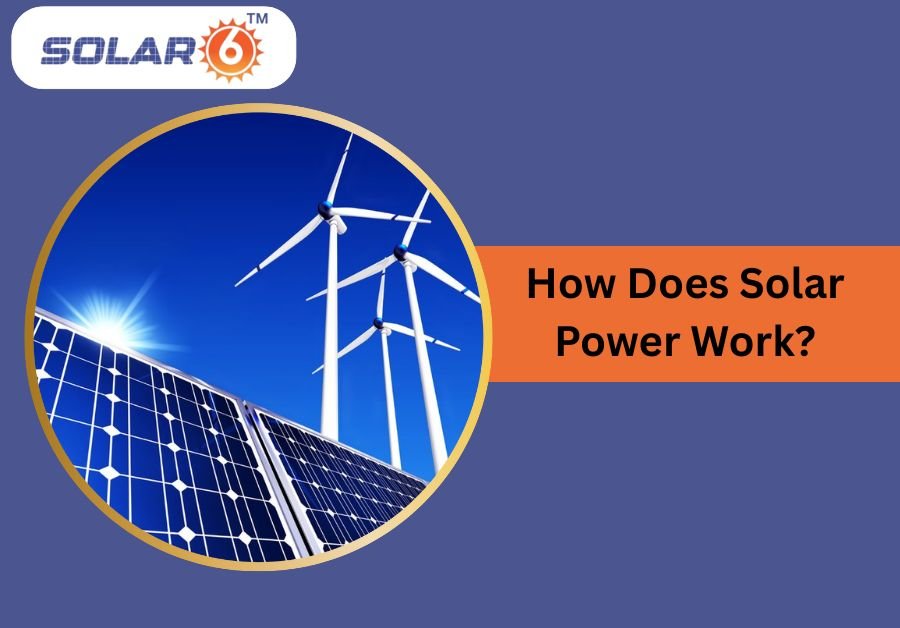In the age of growing electricity demands and environmental concerns, solar power stands out as an easy, renewable, and increasingly less costly power source. But how does solar electricity work? At its core, the method entails shooting sunlight and converting it into usable energy. In this article, Solar6 explores the technological know-how behind solar electricity, the technology that makes it feasible, and how it is changing the energy landscape, with a special mention of groups like Solar6 that are helping power this alteration.
1. Understanding the Basics of Solar Power
The process of turning sunlight’s strength into electrical power is known as solar power. This procedure may be carried out via two number one technologies:
Photovoltaics (PV): The maximum common technique, which uses solar panels to transform sunlight directly into energy.
Concentrated Solar Power (CSP): An extra complex technique, generally utilized in large-scale power plants, in which mirrors or lenses reputation sunlight to warmth a fluid and generate steam that turns a turbine.
For residential and business use, PV systems are far more considerable, way to their versatility, scalability, and declining cost.
2. The Role of Solar Panels
Solar panels are made up of many smaller devices called solar cells, usually made from silicon. Each mobile carries a positive and a negative layer that together create an electric-powered field. Here’s a step-by-step study of how they work:
- Sunlight hits the solar cells, causing electrons inside the silicon to become excited and start transferring.
- The instantaneous current (DC) of power is produced by this electron movement.
- Since most houses and home equipment run on alternating cutting-edge (AC), a tool referred to as an inverter is used to transform the DC electricity into usable AC electricity.
- Panels are commonly hooked up on rooftops or open land where they can receive the most sunlight at some point of the day.
3. Solar Power System Components
A whole sun energy device consists of numerous key additives that paintings together to transform and distribute electricity:
- Solar Panels: Capture sunlight and convert it into DC electricity.
- Inverter: Converts DC to AC electricity.
- Mounting Structures: Secure the panels in place and optimize their angle for sun exposure.
- Battery Storage (non-obligatory): Stores extra energy to be used at some point of midnight or on cloudy days.
- Charge Controller: Regulates voltage and cutting-edge to defend the battery storage machine (if protected).
- Electrical Panel: Distributes the electricity to your property or commercial enterprise.
The complete machine is frequently monitored through a sun overall performance monitoring system, which provides statistics on energy generation and consumption.
4. Grid-Tied vs. Off-Grid Systems
There are two main types of solar power systems:
- Grid-Tied Systems: Connected to the public utility grid. These structures permit users to draw strength from the grid whilst solar power is not sufficient and feed surplus electricity back into the grid, frequently receiving credit in return (a procedure referred to as net metering).
- Off-Grid Systems: Independent from the grid and rely solely on solar panels and battery storage. These are ideal for remote locations where access to the utility grid is limited or unavailable.
Companies like Solar6 often offer both options, customizing installations based on the user’s location, power needs, and budget.
5. The Efficiency Factor
One of the maximum frequently asked questions about solar power is, “How green is it?” Modern solar panels generally have a performance of 15% to 22%, depending on the era used. This means that a portion of the sunlight that hits the panel is transformed into electricity, and the relaxation is lost due to warmth or reflection.
Several factors influence solar panel efficiency:
- Geographical Location: More sunlight is received nearer the equator.
- Shading (trees, buildings, or dust can block sunlight)
- Temperature (panels are less efficient at very high temperatures)
Innovations in solar technology are continually improving efficiency. Some companies, including Solar6, use high-performance panels and smart inverters to maximize output even in less-than-ideal conditions.
6. Environmental and Economic Benefits
The benefits of solar energy amplify some distance beyond reducing power payments. Here’s how:
Environmental Advantages:
- No greenhouse gas emissions for the duration of operation.
- Reduces air and water pollution associated with fossil fuels.
- Helps preserve natural assets through replacing finite power sources with a limitless one—the sun.
Economic Advantages:
- Lower strength prices through the years.
- Potential for financial gain through government subsidies or net metering.
- Job creation in the smooth strength sector, from production to setup and upkeep.
The return on funding for solar structures is increasing as panel expenses drop and electricity prices rise. Companies like Solar6 offer tailor-made solutions, government subsidy assistance, and financing alternatives to make solar even more accessible to a wider target market.
7. Solar Power in Daily Life
Today, solar energy powers more than just homes. It’s used in:
- Street lighting
- Water heating
- Charging electric vehicles
- Powering remote telecommunications equipment
- Running irrigation systems in agriculture
In cities, solar panels are appearing on schools, hospitals, malls, and office buildings. In rural areas, they bring electricity to communities that were once completely off-grid.
8. Challenges and the Road Ahead
Despite its many advantages, solar energy faces a few challenges:
- Intermittency: Solar power generation is weather- and time-based.
- Storage prices: Batteries can be pricey, though fees are decreasing.
- Initial investment: While long-term savings are widespread, the in advance value can still be a barrier.
However, the future seems brilliant. Technological breakthroughs, extended adoption, and supportive regulatory authorities are hastily accelerating the boom of solar energy globally. As economies of scale enhance and cognizance increases, even more households and organizations will pick out the sun.
Conclusion
Solar energy is not a futuristic concept—it’s a gift-day method to the planet’s strength and environmental wishes. By converting sunlight into electricity, it gives an easy, renewable, and increasingly lower-priced alternative to fossil fuels. The manner includes advanced yet stylish generation, from photovoltaic cells to clever inverters, that paintings seamlessly to harness the sun’s energy.
With organizations like Solar6 leading the way in supplying revolutionary, client-friendly solar solutions, switching to solar is now easier and more beneficial than ever. As greater humans embrace this era, solar electricity will hold to illuminate homes, pressure economies, and pave the path toward a sustainable future.

